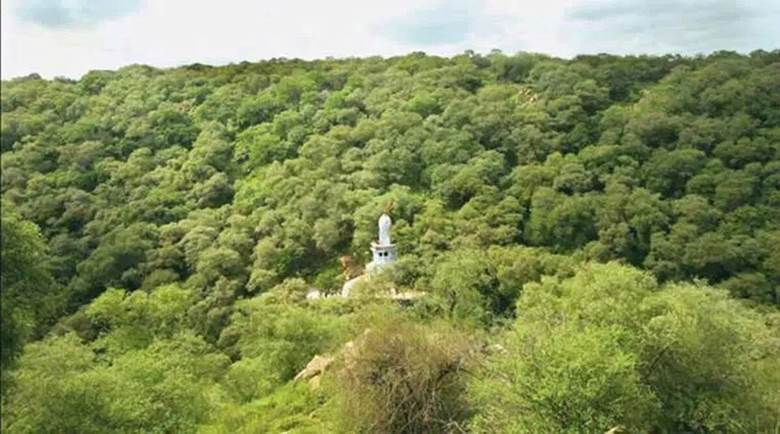Description

Copyright infringement not intended
Context: The Gujarat forest department will restore 10,000 hectares of the Banni grasslands in the coming year, and every year in the coming decade. The state plans on restoring at least 76,000 hectares of this 2,497 sq km grassland which is a high-biodiversity area — it has already restored 10,000 hectares over the past couple of years.
Details:
- The grasslands of Gujarat constitute about 4.33% of the total geographical area, distributed in eight districts and three different climatic regions.
- The Banni grassland was also flagged by Prime Minister Narendra Modi, in his keynote speech at the United Nations High Level Dialogue on Desertification, Land Degradation and Drought last year, as part of India’s endeavour to reach the target of restoring 26 million hectares of degraded land by 2030.
About:
- Banni grassland was declared a Protected Forest in 1955, under the Indian Forest Act, 1927.
- Besides having 40 species of grass and 99 species of flowering plants, Banni is also home to the Indian wolf, jackal, Indian fox, desert fox, desert cat, caracal, hyena, chinkara, Nilgai, wild boar, Indian hare, common monitor lizard — and the cheetah before it became extinct.
- Banni also has 273 bird species and in years of good rainfall, is home to thousands of migratory birds.
- Landscape of Banni has shown drastic changes with the deterioration of the grassland taking place due to “heavy uncontrolled grazing”, widespread ingress of Prosopis Juliflora (a harmful exotic tree species), dams constructed on rivers flowing towards Banni, periodic occurrence of droughts and continuous increase in soil salinity.
- In the year 1989, the area was dominated with grasslands covering 54.57 per cent of the area followed by saline areas devoid of vegetation or sparsely distributed vegetation covering 27.30 per cent and Prosopis Juliflora, an alien invasive species, covering only 15.72 per cent of the area.
- The Land Use Land Cover (LULC) assessment of the grassland over a 10 years interval revealed that grassland areas over the period gradually reduced while in the same period Prosopis Juliflora dominant area increased… encroached to more than 30 per cent.
- The mainstay of the restoration project is, therefore, the removal of this alien species, which incidentally was introduced to the area by the forest department in the 1960s to stop the ingress of the salt flats.
- With a huge 20-lakh livestock population that depends on the grassland, the second part of the project envisions the production and storing of fodder for local farming and pastoral communities that live here.
- The grasslands have native trees like Acacia nilotica, Salvadora persica and Capparis decidua which are protected under Section 26 in the Indian Forest Act, 1927.
About Banni:
- The Banni region emerged from the sea as a result of tectonic activities, received soils from the rivers flown from Bhuj mainland and ends in Greater Rann of Kutch.
- Soils deposited by the rivers and the wind, made the land of Banni richer enough that is could generate diverse grass species, once reported up to 40 grass species, mostly palatable with saline grass species
- Banni region comprises around 3000 sq.km area under Bhuj taluka of Kutch district, is home of Muslim nomadic pastoralists and Meghwal Hindus
- Banni is situated in Arid climate, with high temperature in most of time which reached maximum up to 48°C -50°C during May June and winter temperature goes down to 5°C – 8°C during December January.
- There have been numerous natural wetlands in Banni and the larget one is known as Chhari – Dhandh, a saucer shaped wetland which is recently declared as Conservation Reserve.
https://indianexpress.com/article/cities/ahmedabad/restoring-banni-grasslands-gujarat-battles-invasive-tree-species-8011031/
1.png)












